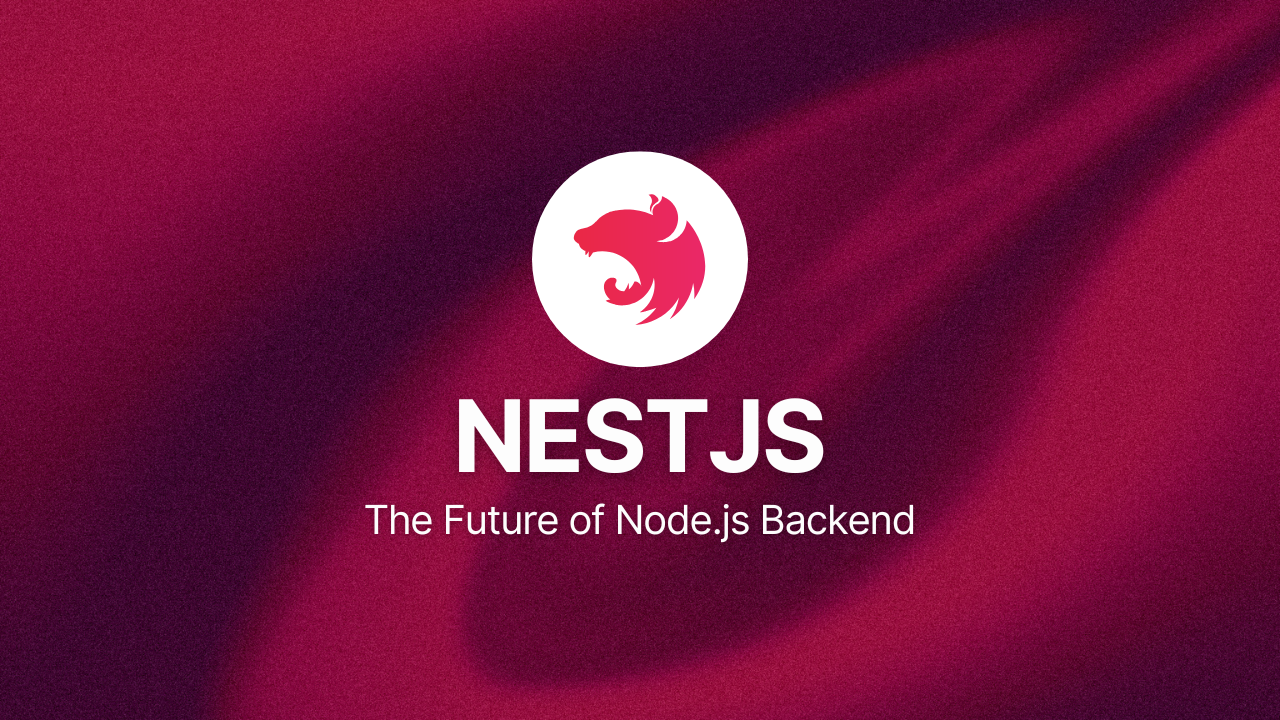After jumping between practically every Node.js framework out there, I've finally found my home with NestJS. I'll be honest - when I first tried it, I was overwhelmed. Coming from Express, the learning curve felt steep, and I kept asking myself, "Why all this complexity?" But stick with me here, because what initially seemed like unnecessary overhead has become the very reason I can't imagine building backends any other way now.
The OOP approach
I know, I know - Object-Oriented Programming can be divisive in JavaScript circles. But for backend work? It just clicks. NestJS uses classes in a way that helps me organize my thoughts and my code.
Take services, for example. Instead of scattering business logic everywhere, I can wrap it up neatly:
import { Injectable } from '@nestjs/common';
@Injectable()
export class UserService {
private users = [];
createUser(name: string) {
const user = { id: Date.now(), name };
this.users.push(user);
return user;
}
getUsers() {
return this.users;
}
}
That @Injectable() decorator might look like magic at first, but it's just Nest handling dependency injection for you. No more passing dependencies down a chain or dealing with messy service locators.
As my projects have grown larger, I've really appreciated how inheritance and polymorphism let me avoid duplicating code. I've created abstract repository classes that my MongoDB and PostgreSQL implementations can extend, and it keeps everything clean.
Modern JavaScript Features
NestJS bet on TypeScript early, and that bet has paid off. But beyond that, they embraced decorators and other modern JS features in ways that actually reduce boilerplate rather than adding it.
Here's how simple a controller can be:
import { Controller, Get } from '@nestjs/common';
@Controller('users')
export class UserController {
@Get()
findAll() {
return 'This action returns all users';
}
}
That's it. No more manually setting up routes, no more verbose configuration. The code says what it does.
Scalable architecture
The moment I knew NestJS was special was when our team needed to split our monolith into microservices. With other frameworks, this would have meant rewriting huge chunks of code. With Nest? We just had to change how our services communicated:
import { Controller } from '@nestjs/common';
import { MessagePattern } from '@nestjs/microservices';
@Controller()
export class AppController {
@MessagePattern('notifications')
handleNotification(data: any) {
console.log('Received notification:', data);
}
}
And suddenly we had a service listening for messages. Nest has built-in support for RabbitMQ, Kafka, and Redis too, so we didn't need to reinvent any wheels.
Complete development toolkit
One thing that drove me crazy with Express was constantly hunting for packages to handle basic stuff like authentication. NestJS gives you the whole toolkit:
import { Injectable } from '@nestjs/common';
import { PassportStrategy } from '@nestjs/passport';
import { Strategy, ExtractJwt } from 'passport-jwt';
@Injectable()
export class JwtStrategy extends PassportStrategy(Strategy) {
constructor() {
super({
jwtFromRequest: ExtractJwt.fromAuthHeaderAsBearerToken(),
secretOrKey: 'secretKey',
});
}
validate(payload: any) {
return { userId: payload.sub, username: payload.username };
}
}
Whether it's WebSockets, GraphQL, or different database ORMs like TypeORM or Prisma, Nest has official modules that just work. My decision fatigue has dropped dramatically since switching.
Modules that make sense
I used to think I understood modular architecture until I worked with NestJS. Each feature lives in its own little world:
import { Module } from '@nestjs/common';
import { UserController } from './user.controller';
import { UserService } from './user.service';
@Module({
controllers: [UserController],
providers: [UserService],
})
export class UserModule {}
This has made our codebase so much more navigable. New team members can join and immediately understand which piece does what.
Clean modular structure
This might be my favorite part. NestJS has guardrails everywhere. Want to check if a user has the right roles before they access an endpoint?
import { Injectable, CanActivate, ExecutionContext } from '@nestjs/common';
@Injectable()
export class RolesGuard implements CanActivate {
canActivate(context: ExecutionContext): boolean {
const request = context.switchToHttp().getRequest();
const user = request.user;
return user && user.roles.includes('admin');
}
}
Implement a guard, and you're done. The patterns are consistent, which means our entire team writes code the same way. No more "clever" solutions that only one developer understands.
Conclusion
Look, I'm not saying NestJS is perfect or that it's right for every project. If you're building a tiny API with three endpoints, this might be overkill. But for anything serious – anything that might grow over time or involve multiple developers – I haven't found anything that comes close.
The steep learning curve at the beginning pays dividends every single day now. My code is cleaner, more testable, and honestly, I'm having more fun writing it. If you've been on the fence about trying Nest, consider this your sign to jump in.



